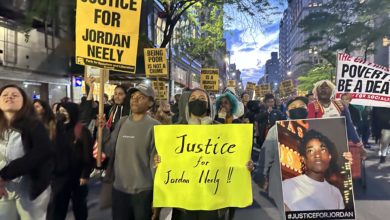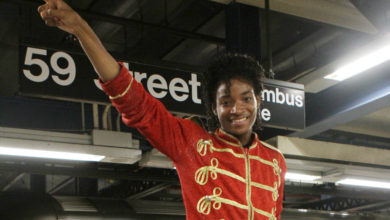Although it sounds benign and “grassroots,” Neighborhood Watch developed as a national phenomenon and institution in the early 1970s largely as a reaction to the Black freedom movement.
For segregationists, the Black liberation struggle was breaking down law and order—that is, the order of political and social apartheid. Fair Housing Acts challenged the racism of real estate developers and suburban homeowners’ associations. The movement denounced the inadequate and unequal services in poor Black communities, which repeatedly rose up in revolt through the late 1960s.
In the late 1960s, the federal government began injecting billions of dollars into police departments and the FBI’s Counter-Intelligence Program to escalate a campaign of pacification of Black communities and activists. They began to restructure and reorganize the repressive forces—including prisons, police and surveillance.
“Law and order” therefore became the banner under which this counterrevolutionary offensive was organized by the ruling class. They mobilized many working class whites in opposition to civil rights legislation and desegregation, portraying the anti-racist movement as a direct threat to their livelihoods and the safety of their families.
In addition to reorganizing the entire police apparatus and arming it with the latest military hardware, millions of dollars were pumped into “soft power” strategies of police control. One such program was Neighborhood Watch, which essentially deputizes homeowners to surveil their neighbors, spot “intruders” and alert police.
‘Watch groups’ auxiliaries of the state
Neighborhood Watch groups and patrols, funded by the Department of Justice and administered by the National Sheriffs’ Association since 1972, naturally function as auxiliaries to the state. In 2002, Neighborhood Watch was expanded to become USAonWatch so that its volunteers could feed information about “terrorist” activity to the Department of Homeland Security.
In oppressed communities where Neighborhood Watch groups function, they typically function to insinuate the police into the social lives of residents. Rather than replace police control or surveillance, they encourage it.
In primarily white middle-income communities, Neighborhood Watch groups use the coded language of “fighting crime” but in practice this often amounts to monitoring the movement and activities of people of color in and out of their racially exclusive enclaves.
The example of Twin Lakes
The Retreat at Twin Lakes townhouse complex where Trayvon was murdered was built between 2004-2006. Originally intended for higher income families, the initial cost of a townhouse was $250,000. But today, five years after the economy collapsed, prices have dipped below $100,000. Fifteen percent of the homes sit vacant and more than half the residents are renters.
The Twin Lakes community is now less than 50 percent white. In September 2011, a Neighborhood Watch group was established with the help of the Sanford police.
It is fairly obvious that it came into existence as a reaction to the shifting demographics of the neighborhood. Problems in the community started when “foreclosures forced owners to rent out to low-lives and gangsters,” said Frank Taaffe, Twin Lakes and former Neighborhood Watch Block Captain. This thinly-veiled language leaves absolutely no doubt to the group’s racist character. It is not just a question of the mind and psychology of George Zimmerman.






